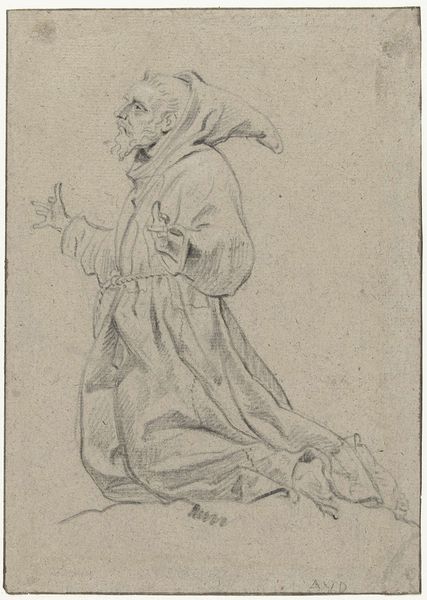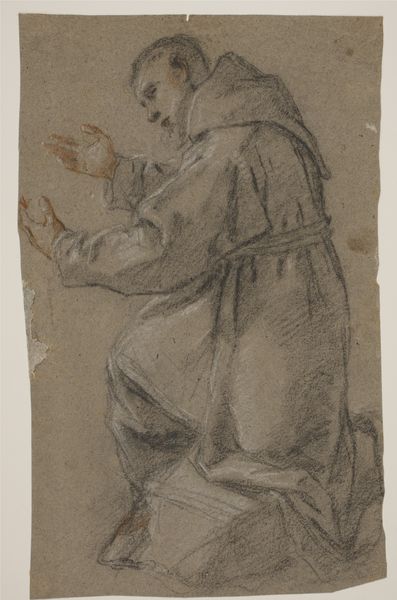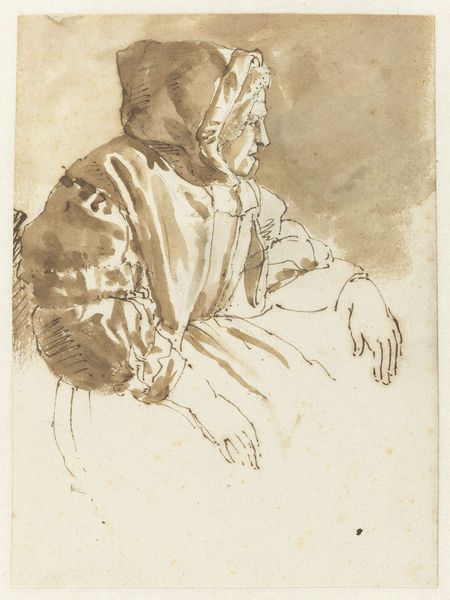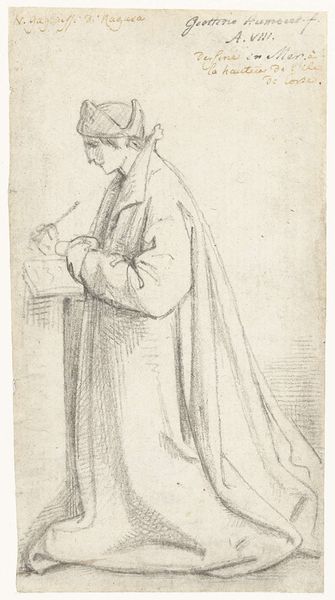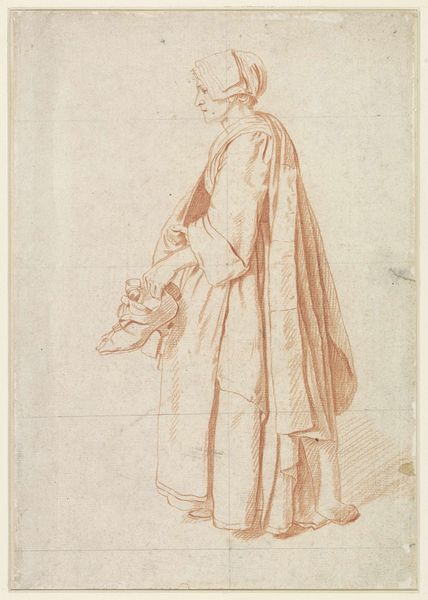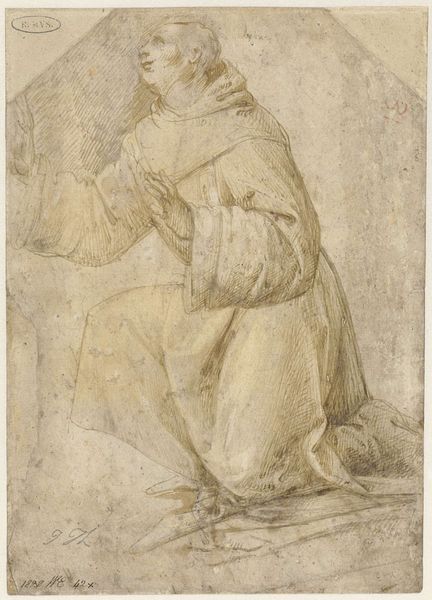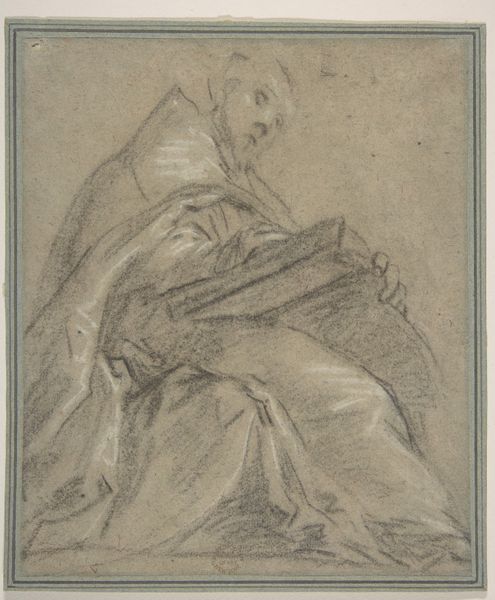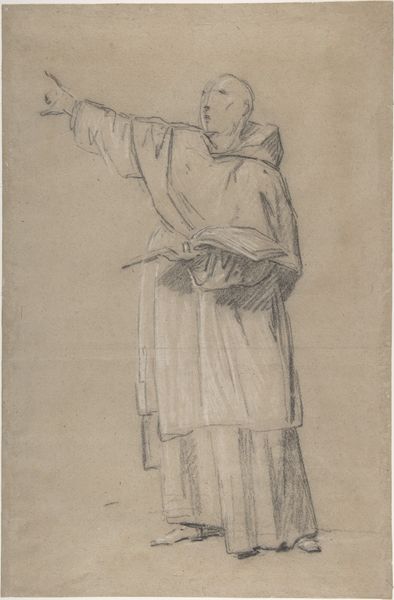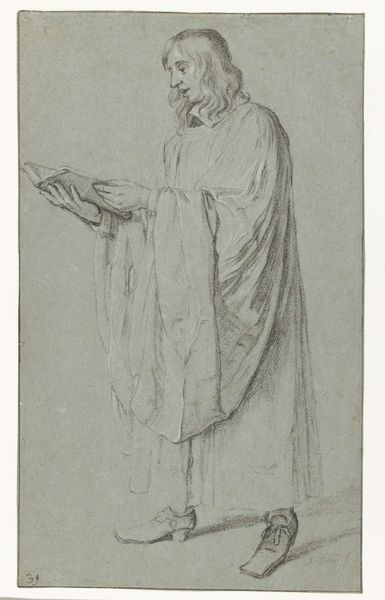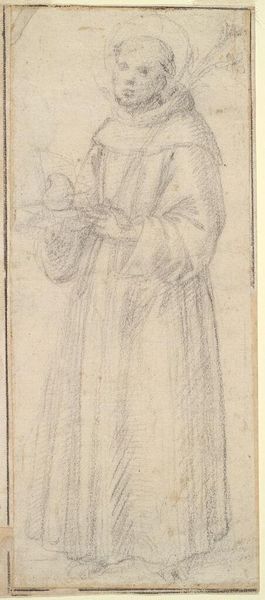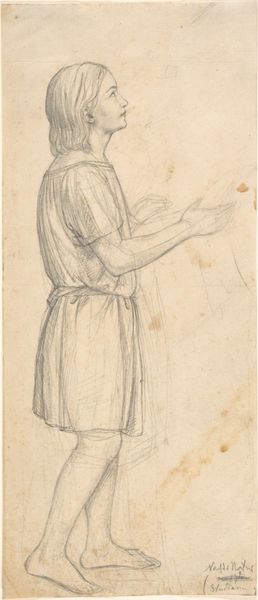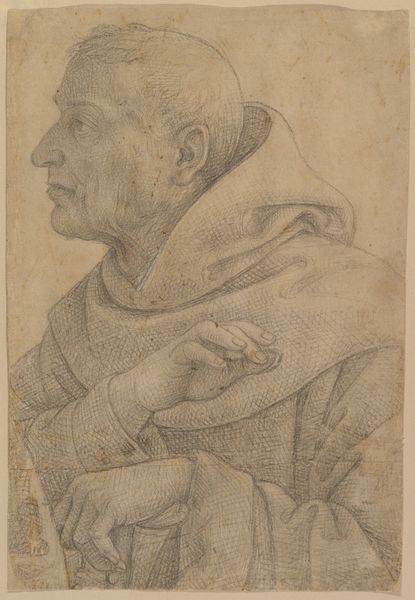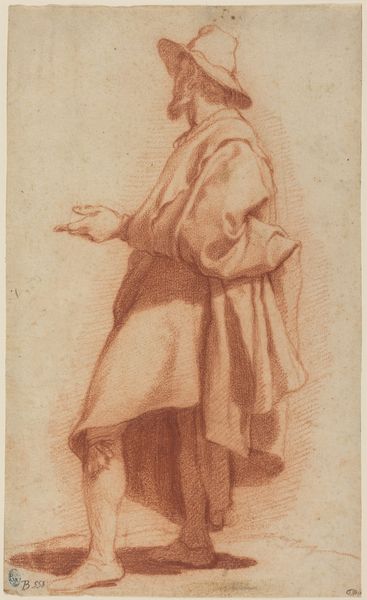
drawing, mixed-media, paper, pen
#
portrait
#
pencil drawn
#
drawing
#
amateur sketch
#
mixed-media
#
facial expression drawing
#
light pencil work
#
baroque
#
pencil sketch
#
charcoal drawing
#
figuration
#
paper
#
portrait reference
#
pencil drawing
#
chiaroscuro
#
line
#
pen
#
portrait drawing
#
pencil work
Dimensions: height 253 mm, width 207 mm
Copyright: Rijks Museum: Open Domain
Editor: This drawing, "Monnik, rechts in profiel" or "Monk, profile right", is attributed to Peter Paul Rubens, placing it somewhere between 1587 and 1640. It looks like a study done in pen and pencil on paper. What's striking to me is the emphasis on the monk's robes, almost eclipsing his face in detail. How do you approach interpreting a work like this? Curator: Focusing on the materials and methods gives us a rich understanding. This isn't just a depiction of piety; it’s about production. Consider the relative cost of paper and the time involved in creating this study. The act of drawing, a practice involving specific tools, embodies skilled labor. Are the lines confident and swift, or hesitant and reworked? This suggests something about the artist's intention, his mastery and control over the materiality of image-making. What kind of impression do the raw materials, pen, pencil, and paper, communicate to you? Editor: That's a good point. The drawing has a sketch-like quality; maybe that means Rubens considered it less precious or not quite 'finished,' even though the level of detail is very high. Is there a sense that this sketch could've been created for mass consumption at some point? Curator: Potentially. Think about the consumption of images during that era. Prints made after Rubens’ drawings allowed for wider distribution, bringing his vision to a larger audience beyond the elite art market. How might the materiality – the shift from drawing to print, for example – impact the interpretation of the subject matter itself, of monastic life? What sort of value does the materiality add? Editor: That is fascinating. The act of mass-producing an image initially crafted with such individual skill almost seems contradictory. It reveals that what truly defines the piece, then, extends beyond its visual impact to encompass the processes of creation and dissemination within a broader socio-economic framework. Curator: Exactly. It encourages a shift in perspective; what's striking isn’t necessarily the artist’s inspiration alone but the web of material practices and modes of distribution. This lens highlights the interplay between art, labor, and consumption.
Comments
No comments
Be the first to comment and join the conversation on the ultimate creative platform.
